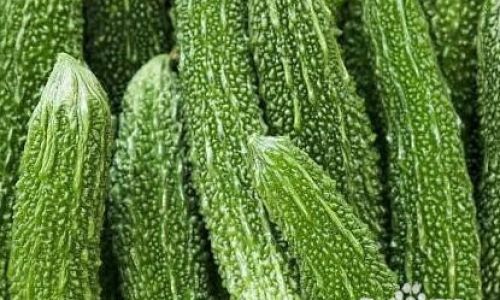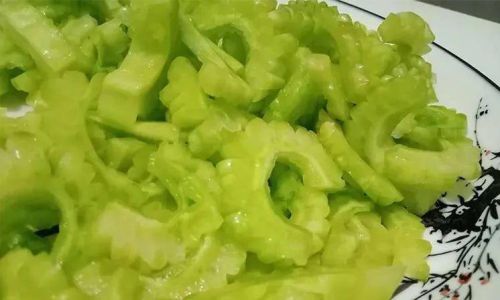Introduction
Bitter gourd, scientifically known as Momordica charantia, is a nutritious and versatile vegetable cherished for its unique bitter taste and myriad health benefits. From aiding in blood sugar regulation to boosting the immune system, bitter gourd has earned its place in culinary traditions across Asia, Africa, and the Caribbean. However, preserving this vegetable can be challenging due to its delicate nature and tendency to spoil quickly. In this comprehensive guide, we will explore various methods for how to preserve bitter gourd, ensuring that you can enjoy its health benefits and flavor long after harvest or purchase.
Understanding Bitter Gourd’s Shelf Life

Before diving into preservation techniques, it’s crucial to understand the natural shelf life of bitter gourd. Fresh bitter gourd, when stored properly in a cool, dry place, can last up to a week. However, this duration can vary based on factors such as ripeness, handling during harvest or purchase, and storage conditions. Once cut or cooked, bitter gourd’s shelf life shortens significantly, often lasting only a couple of days in the refrigerator.
Selection and Handling Before Preservation
-
Choosing the Right Bitter Gourd: Start by selecting firm, bright green (or mature yellow/orange for some varieties) bitter gourds with smooth, unblemished skin. Avoid those with soft spots, wrinkles, or discoloration, as they are likely past their prime.
-
Harvesting Tips: If you’re harvesting from your garden, the best time is when the gourds are fully grown but still tender. Cut them from the vine using a sharp knife, leaving a small piece of the stem attached to help preserve freshness.
-
Proper Cleaning: Rinse bitter gourds under cold running water to remove dirt and debris. Pat them dry using a clean cloth or paper towels to avoid moisture accumulation, which can lead to faster spoilage.
Refrigeration: The Basic Preservation Method
For short-term storage, refrigerating bitter gourd is the simplest and most effective method. Here’s how to do it:
-
Wrapping: Wrap each bitter gourd individually in paper towels to absorb excess moisture. Place them in a plastic bag, ensuring there’s enough room for air circulation. Alternatively, you can store them in a perforated plastic container.
-
Temperature: Store in the crisper drawer of your refrigerator, where temperatures are typically between 32°F to 40°F (0°C to 4°C). This helps maintain freshness and slow down spoilage.
-
Duration: Fresh bitter gourds can last up to a week in the refrigerator using this method.
Freezing for Long-Term Preservation

For those who want to extend the shelf life of bitter gourd beyond a week, freezing is an excellent option. Here’s a step-by-step guide:
-
Preparation: Wash and dry the bitter gourds as mentioned earlier. Slice them into thin rounds, half-moons, or any desired shape. Blanching is optional but recommended to retain color and texture; submerge slices in boiling water for 2-3 minutes, then plunge into ice water to stop the cooking process.
-
Drying: Pat the slices dry thoroughly with paper towels to remove any excess water, which can cause freezer burn.
-
Freezing: Arrange the slices in a single layer on a baking sheet lined with parchment paper. Place the sheet in the freezer until the slices are frozen solid, then transfer them to airtight freezer bags or containers. Label with the date for future reference.
-
Storage: Store in the freezer at 0°F (-18°C) or below. Frozen bitter gourd can be kept for up to a year, though the best quality is maintained within 6-8 months.
Canning: Preserving Bitter Gourd in Jars
Canning is another effective long-term preservation method, especially for those who enjoy pickled or cooked bitter gourd preparations.
-
Preparation: Wash and slice the bitter gourds. You can choose to can them raw or cooked. For cooked preparations, sauté or boil slices until tender before canning.
-
Canning Jars: Use clean, sterile glass jars with tight-fitting lids. Ensure there are no cracks or chips that could compromise sealing.
-
Syrup or Brine: Prepare a syrup or brine solution. For pickled bitter gourd, a vinegar-based brine with spices like garlic, chili, and mustard seeds adds flavor. For syrupy preserves, use a simple sugar and water mixture.
-
Packing: Pack the bitter gourd slices into jars, ensuring they are submerged in the syrup or brine. Leave headspace according to canning guidelines to prevent pressure build-up during processing.

-
Processing: Use a water bath canner or a large pot with a rack. Submerge jars completely in water, ensuring at least 1-2 inches of water above the jar tops. Boil for the recommended time based on your altitude and jar size (typically 20-30 minutes for quarts at sea level).
-
Cooling: Remove jars from the canner and let them cool completely on a towel or rack. Listen for the pinging sound as lids seal. Check for proper sealing by pressing the center of each lid; it should not flex up or down.
-
Storage: Store canned bitter gourd in a cool, dark place. Properly canned jars can be stored for up to a year or more.
Drying: Preserving Bitter Gourd as a Convenient Snack
Dried bitter gourd slices make for a unique and healthy snack. Here’s how to dry them:
-
Preparation: Wash, dry, and slice the bitter gourds thinly. You can use a food dehydrator or your oven’s lowest setting for this purpose.
-
Dehydrating: Arrange slices on dehydrator trays or oven racks. In a dehydrator, set the temperature to around 135°F (57°C) and dry for 6-12 hours, depending on thickness and desired dryness. In an oven, prop the door open slightly with a wooden spoon to allow moisture escape and dry for 8-24 hours, checking frequently to prevent burning.
-
Storing: Once fully dried, store bitter gourd slices in airtight containers in a cool, dark place. They can last for several months to a year.
Conclusion
Preserving bitter gourd doesn’t have to be a daunting task. By utilizing methods such as refrigeration, freezing, canning, and drying, you can enjoy this nutritious vegetable throughout the year. Each method offers unique benefits and suits different needs, from short-term freshness to long-term storage solutions. With proper handling and storage, bitter gourd can retain its flavor, texture, and nutritional value, making it a versatile and sustainable addition to your diet. Experiment with these preservation techniques to find the one that best suits your lifestyle and culinary preferences.






0 comments